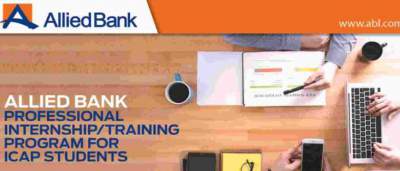Assets and liabilities are the critical components of the financial statements and the measurement of these two elements defines the presentation of financial statements. The objective of financial reporting from (Barth, 2013) is to provide the complete, free from error and accurate financial information to the existing users and potential investors. Users take the important decisions of investment on the basis of financial information; inaccurate or incomplete information may lead to wrong decisions.

Measurement concepts are needed in financial reporting. The primary objective of accounting is to present economic phenomena in numbers. IASB framework defines the measurement as the process of determining the monetary amounts that are recognized in the financial statements but the framework does not define the objective of measurement or a conceptual definition, the framework lists measurement bases without explaining which one is better in a particular situation.
Historical Cost
Assets are recorded at the amount of cash or cash equivalents paid or the fair value of the consideration given to acquire them at the time of acquisition. Liabilities are recorded at the amount of proceeds received in exchange for the obligation or the amounts of cash or cash equivalents expected to be paid to satisfy the liability in the normal course of business. Historical cost does not define the accounting treatment of leased assets, financial instruments etc in which the historic cost would be zero.
Current Cost
Assets are carried at the amount of cash or cash equivalents that would have to be paid if the same asset was acquired currently. Liabilities are carried at the undiscounted amount of cash or cash equivalents that would be required to settle the obligation currently.
Realizable (Settlement) Value
Assets are carried at the amount of cash or cash equivalents that could currently be obtained by selling the asset in an orderly disposal. Liabilities are carried at the amounts of cash or cash equivalents expected to be paid to satisfy the liabilities in the normal course of business.
Present Value
Assets are carried at the present discounted value of the future net cash inflows that the item is expected to generate in the normal course of business. Liabilities are carried at the present discounted value of the future net cash outflows that are expected to be required to settle the liabilities in the normal course of business.
Historical cost is the most commonly used measurement basis in preparing of the financial statements; framework does not clearly guide whether to use same measurement basis for all the assets and liabilities of the company or not. Entities use different measurement bases for different assets and liabilities of the company. Some entities use different measurement bases for the same assets for example under International financial reporting standard (IFRS) 9 identical investments in US at Treasury securities can be measured fair value or at amortized cost depending on the managements` intention or entity’s` business model; similarly some entities treat computers as inventory like apple and measure them using lower of cost or fair value less cost to sell while others may classify computers as equipment and measure them using the depreciation amortization method another example is real estate some entities use it as an investment property while others classify as property, plant and equipment.
Development of Measurement Concepts
The focus of measurement in standard setting is on individual items (assets and liabilities) financial reports also include aggregate amounts such as total assets and total liabilities. Measurement concepts should need to take considers the aggregate amounts and changes in measurement in order to achieve the objective of financial reporting.
The first step is to define accounting measurement in order to identify the objective of the measurement. The dictionary meaning of measurement is the association of numbers with physical or economic attributes such as size, amount, cost dimension and value of the object of the measurement by comparison with a standard units(Standard currency of the country).the next step is to develop a criteria for the users to choose among alternative measurement bases.
The objective of financial reporting is to provide the useful information to the existing and potential investors and other stake holders in making important decisions. These decisions include decisions to buy, sell or hold the shares. The objective of financial reporting forms the basis for the framework and other components including qualitative characteristics, definition of financial elements, measurement and presentation. Financial statement elements are assets, liabilities, equity, income, and expense but the measurement of all elements depend on two main elements (assets and liabilities). The framework identifies two fundamental and four enhancing qualitative characteristics, useful financial reporting information maximizes these qualitative characteristics.
Fundamental Qualitative Characteristics
Relevance
Relevant information has predictive value, confirmatory value or both. Predictive means information can be used as an input to predict future outcomes. Confirmatory value means that the information provides feedback, confirms or changes the user’s decision.
Faithful Representation
Faithful representations are complete, neutral and free from error. Complete information means all the information that is required by the user to understand and make decision is included and is complete in all aspects .neutral means the information is not biased. Free from error means there are no mathematical errors or omissions in the financial information.
Enhancing Qualitative Characteristics
- Comparability: Comparability means users can compare the financial information to get a clear picture of the financial statements .e.g. comparing last year’s financial statements with this year, comparing entity`s financial statements with other entities in similar industry.
- Verifiability: Information is verifiable if it has been audited by independent auditors. Verifiable information enhances users` confidence. Although auditors’ opinion expresses reasonableness assurance and is not absolute assurance but audit report enhances users trust.
- Timeliness: Timeliness means information is provided to users in time to influence their decisions. Information provided after the considered lapse of time is irrelevant for the user.
- Understand ability: The information is characterized, summarized, classified and presented clearly in such a way so that users can analyse and understand the information.
The framework and accounting standards consider financial statement elements on individual basis, we aggregate individual assets and liabilities into total assets and liabilities. Therefore measurement concepts should incorporate the effects of measurement on aggregate amounts. Investors predict the future cash flows of the entity because entity’s` future cash flows are directly related to investors future cash flows. Asset measurements that reflect what mangers intend to do with the assets would enhance the investors’ ability to predict entity cash flows. For example if an entity intents to trade debt securities will use fair value but if the entity intents to hold the securities to maturity, entity will use amortized cost.
Financial statements include statement of financial position, statement of comprehensive income, statement of cash flows. The statement of comprehensive income is a disaggregation of the change in retained earnings and accumulated other comprehensive income from one period to the next. The statement of cash flow is a disaggregation of the change in cash.
Definitions of Financial Statements Elements
Asset
A resource owned and controlled by the entity with the expectations that it will provide future economic benefits to the entity. An entity must have significant ownership and control on the resource to classify it as an asset. Assets of the entity are divided into current and non-current assets. Current assets comprise inventory, debtors, cash, and bank etc while non-current assets are property plant and equipment, furniture etc. Classification of the assets depends on the entity’s` business model and may vary, for example apple classify computers as inventory while computers are the part of property plant and equipment for the other entities.
Liability
It is the obligation of the entity arising from the past events or transactions and the settlement of which is expected to outflow of entity’s` resources. Liabilities are also classified as current and non-current liability. Current liabilities are expected to be settled within 12 months. Current liabilities include accounts payable, short term loan and provision for taxation etc. Non-current liabilities are expected to be settled after 12 months and include long term loans.
Expense
It is the cash or cash equivalent paid to generate the profit. Expenses include admin, selling and marketing expenses.
Capital
It is the initial amount invested in the business.
Revenue
Income earned from the operations of the company like sale of goods, providing of services etc.
Financial statement elements are measured on individual basis while financial users analyze the aggregate items like what are the total assets and total liabilities of the company and so on therefore measurement concepts need to consider the aggregate amounts because sometimes user take decision on the aggregate amounts. Though it is still unclear what measurement helps investors to predict the cash flows of an entity?
Comparison of Measurement Choice
Historical Cost
Assets are recorded at the amount of cash paid at the time of acquisition. Liabilities are recorded at amount of proceeds received in exchange for obligation. Historical cost can be modified or unmodified.
Modified Historical Cost
Modifications made to the historical cost amount in accordance with US GAAP and IFRS. Historical cost amount can be modified by allocating, amortizing, impairing, partially updating.
Unmodified Historical Cost
An initial cost amount that has not been updated over a period of time
Fair value:
Fair value is the price that would be received to sell an asset or paid to settle the liability in the normal course of business at the measurement date. Modified and unmodified historical costs are based on historical information while fair value is based on current information.
Realizable Value:
Assets are carried at the amount of cash or cash equivalents that could currently be obtained by selling the asset in an orderly disposal. Liabilities are carried at the amounts of cash or cash equivalents expected to be paid to satisfy the liabilities in the normal course of business.
Present value:
Assets are carried at the present discounted value of the future net cash flows that the item is expected to generate in the normal course of business.
A recent development of International Accounting Standard Board (IASB) and US Financial Accounting Standard Board (FASB) suggests that all assets and liabilities should not be measured on same bases. A measurement should be based on how a particular asset or liability will be used by the entity. According to IASB measurement bases should be same for same assets in order to provide the consistency in the financial statements. If an entity reclassifies assets it should measure them on fair value and in case of gain or loss it should be recognized in other relevant criteria.
Historical Cost Accounting
It is the amount of cash or cash equivalents paid at the time of acquisition of assets. Historical cost accounting is used in the environment where prices are stable or nominal prices change. Historical cost is relevant to decision-making. When the investors take decision they usually go for future cash flows and in order to forecast future cash flows they need historical cost so that they can analyze how much was earned and on this basis they can forecast the future cash flows. Historical cost is verifiable; it is the amount paid at the time of acquisition, therefore it cannot be manipulated and investors can rely on these figures. It increases effectiveness of internal controls. Past records are used to establish accountability. Relevance of historical cost is limited. Although it is useful for evaluating past records but users of financial information also need information about the increase or decrease in their investment and historical cost is insufficient for such evaluations. Historical cost does not show the current valuation of the entity, hence it misguides investors, creditors and other stake holders about their actual worth in the entity at the present time (Abu Bakar & Said, 2007).
Modified Historical Cost
Modifications made to the historical cost amount in accordance with the International Financial Reporting Standards (IFRS).modification may be made by allocating, impairing, amortizing and partially updating. Historical costs are revalued in order to give current worth of the assets (Abu Bakar & Said, 2007).
Current Purchasing Power Accounting
Financial statements prepared under the historical cost method are re-stated through approved price index. Financial statements are restated in the following manner
Conversion Factor
For restating the historical figures, figures are multiplied by conversion factor. In this process three conversions are used. Beginning conversion is used for items taken from the beginning for example assets and liabilities of the operating balance sheet. Average conversion is used for items which occur throughout the year like sales, purchases and operating expenses. Ending conversion is used for the items that occur at the reporting date like tax, dividend. Current purchasing power method classifies all the assets and liabilities into monetary and non-monetary items (AccountingManagement, 2012).
Monetary Items
These are the assets and liabilities, the amount of which is receivable or payable at the current monetary value. Monetary assets include cash, bank, debtors, and prepaid expense etc. Monetary liabilities include creditors, accrued expenses, tax payable, and dividend payable (AccountingManagement, 2012).
Non-monetary Items
These are the assets and liabilities which cannot be stated in the fixed monetary value and includes land, building, accumulated depreciation, and therefore such items are restated to represent the current purchasing power (AccountingManagement, 2012).
Gain/loss on Monetary Items
Monetary items are assets and liabilities stated on fixed monetary amount therefore change in purchasing power results in gain or loss. In times of inflation assets result in loss and liabilities result in gain. Such gain/loss is incorporated in statement of comprehensive income under current purchasing power method (AccountingManagement, 2012).
Profit:
In current purchasing power method, profit can be measured in two ways. Re-statement of income method; historical statement of comprehensive income is restated in current purchasing power. Net change method; in this method profit is changed in equity during an accounting period. Opening and closing balance sheet prepared under the historical cost method are converted in current purchasing power method. While non-monetary items are re-stated (AccountingManagement, 2012).
Restated Balance Sheet:
The historical balance sheet is revised to reflect the true picture.
Current Cost Accounting
Current cost is the amount of cash or cash equivalents required to be paid to acquire the asset currently. Similarly it is the amount required to be paid to settle the liability currently in the normal course of business.
It is Relevant for decision making. Current cost provides better reality of the entity’s` transactions and is more useful in making decision than historical cost. Historical cost is relevant where business environment is stable but the business environments are changing rapidly therefore current cost presents financial statements that presents true worth of the entity. Current cost helps in calculating profit of the holding assets when they are sold. Whereas, current cost is an estimate, it is not based on the actual transactions therefore sometimes it is difficult to measure the accurate cost when the market for the same asset is not available. And Current cost is not relevant in long term decisions. Investors use current cost method in the short term decision making. Current cost does not show the trends and changes in the dividend (Abu Bakar & Said, 2007).
Continuously Contemporary Accounting
According to continuously contemporary accounting, assets should be stated at monetary values, changes in general purchasing power money should be incorporated in financial statements. Supplementary statements with different valuation method should be avoided as it will confuse the user and will lose the credibility of financial information. This theory contradicts the assumption of going concern and is based on the availability of market prices. Chamber recommended that all assets should be recorded at the current cash equivalents. Current cash equivalents are the amounts generated by selling the assets. Depreciation expense would not be reflected in continuously contemporary accounting (Al-Hogail & Previts, n.d.).
There are many measurement bases for the valuation of assets and liabilities. Different entities choose different measurement bases for the valuation of their assets and liabilities. For measuring the value of roads and highways fair value is most suited provided market prices are readily available. Fair value is preferred over the conventional historical cost method. Assets and liabilities are measured at the current market conditions. Three valuation techniques are used in fair value measurement; market approach, cost approach and income approach. In case of non-availability of market price, historical cost is the next best alternate method for the valuation of assets and liabilities. Historical cost is verifiable. Users can trust on it. Historical cost is not estimate or prediction unlike other measurement methods. Estimates and predictions can be wrong and may lead to wrong decision. Modified historic cost is another good model to measure the assets and liabilities. In modified historic cost, original cost amounts are modified by allocating, impairing, amortizing, updating and partially changing. Modified historic cost sticks to original amount with the necessary amendments. In case of roads and highways prices do not change frequently therefore modified historic cost is preferred.
Bibliography
Barth, M. E., 2015. Measurement in Financial Reporting: The Need for Concepts, s.l.: Stanford University.
Abu Bakar, N. B., & Said, M. J. (2007, January). Historical Cost Versus Current Cost Accounting. Accountants Today, 20–23. Retrieved from https://www.mia.org.my/at/at/200701/06.pdf
AccountingManagement. (2012). Steps Of Current Purchasing Power (CPP) Method. Retrieved December 17, 2014, from https://accountlearning.blogspot.com/2011/06/steps-of-current-purchasing-power-cpp.html
Al-Hogail, A. A., & Previts, G. J. (n.d.). Raymond J. Chambers’ Contribution to the Development of Accounting Thought. Accounting Historians Journal, 28(2). Retrieved from https://www.accountingin.com/accounting-historians-journal/volume-28-number-2/raymond-j-chambers-contribution-to-the-development-of-accounting-thought/



